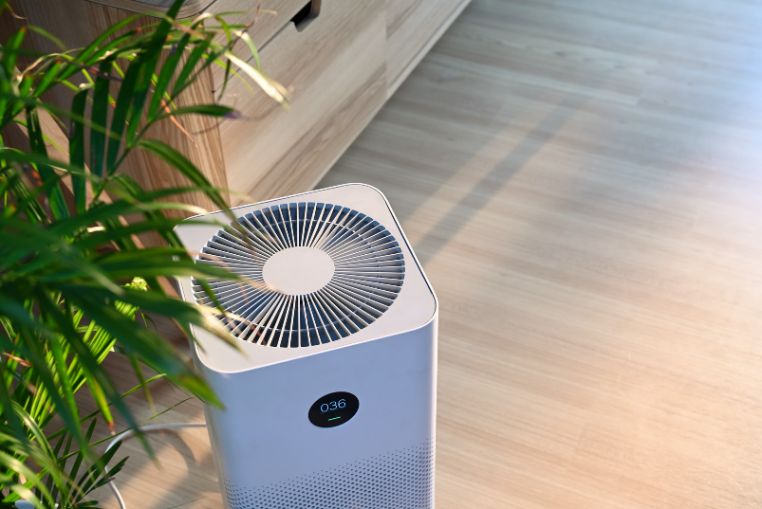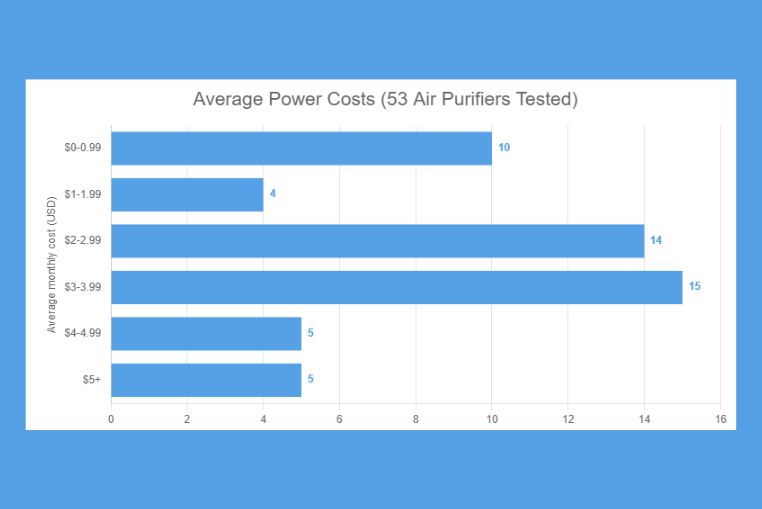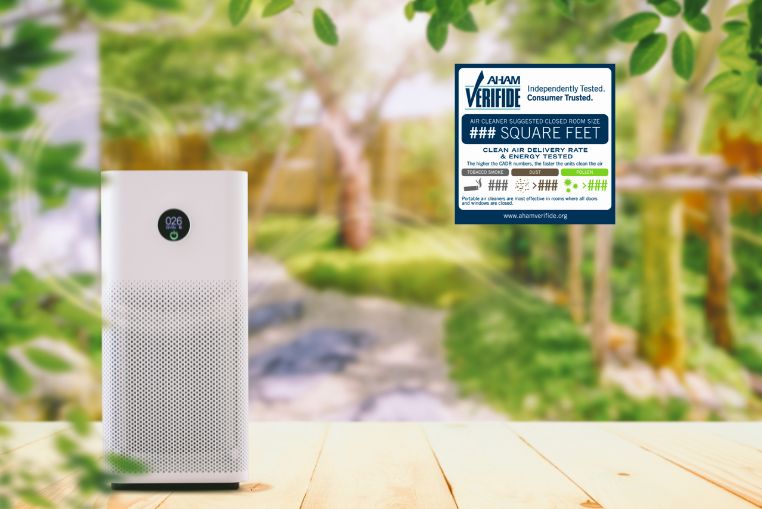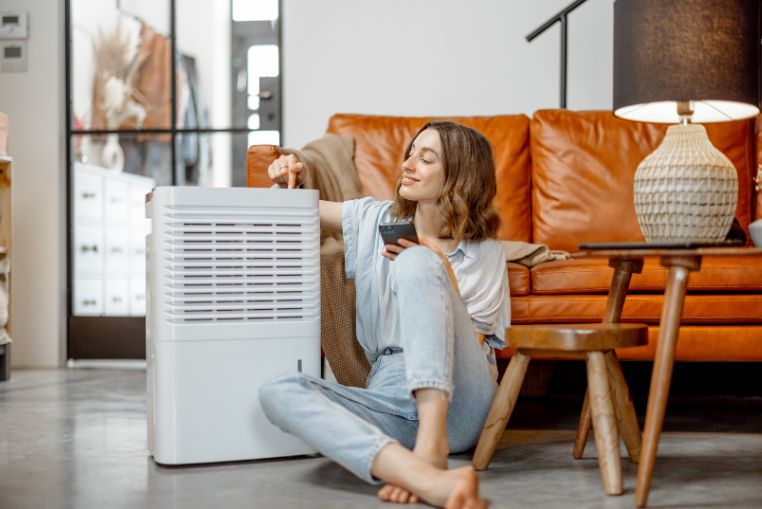Do Air Purifiers Use a Lot of Electricity? 6 Tips Saving Energy
Do you realize that the demand for air purifiers has increased? Right! This natural situation is driven by increasing awareness of indoor air quality and its impact on health. However, along with the benefits they provide, concerns have emerged about the potential electricity consumption associated with these devices. Many answers, “Do air purifiers use a lot of electricity?“. If you’re wondering the same thing, congratulations, you’ve come to the right place.
This article aims to shed light on the electricity usage of air purifiers, explore factors influencing their energy consumption, and provide practical tips to save on air purifier electricity costs without compromising indoor air quality. Now, join us to decode your question!

Do Air Purifiers Use a Lot of Electricity?
Do air purifiers use a lot of electricity? Honestly, this is not an easy question to answer. Many surveys and in-depth studies have been conducted to answer this question. One of them is a survey conducted by Air Purifier First. This unit has been tested on 53 different air purifiers, and the results show that more than half of the tested air purifiers have electricity costs of between $2-4 per month. This study also shows that an average (50W) air purifier should never consume more than $4 when you don’t always use the air purifier at full speed. Significantly, all 53 air purifiers cost around $2 per month if used optimally.
However, this answer is only for those who know how to use air purifiers properly. On the contrary, you will spend a small amount of electricity if you do not understand your air purifier and how to use it to save costs.
On the other hand, each type of air purifier has its own unique characteristics. Therefore, it is inevitable that not all air purifiers consume the same amount of power. And it is evident that using an air purifier that consumes a lot of electricity also depends partly on the type of air purifier you choose.

Factors Affecting Air Purifiers’ Energy Consumption?
As mentioned above, many factors answer the question, “Do air purifiers use a lot of electricity?”. So, in this section, we will give you some of the most common factors that determine how much electricity you will have to pay for the air purifiers in your home.
1. Room size and air circulation
The dimensions of the room where your air purifier operates significantly impact its energy consumption. Larger rooms require the purifier to process more air, potentially leading to increased energy usage. When an air purifier is placed in a larger space, it must work harder to ensure adequate air circulation and filtration.
2. Selected fan speeds and operational modes
Modern air purifiers often have multiple fan speed settings and operational modes to accommodate various air quality needs. While higher fan speeds can lead to more air being filtered in a shorter time, they also consume more energy. Conversely, lower fan speeds are more energy-efficient but might take longer to purify the air effectively. As a result, this becomes a factor determining the final answer to the question, “Do air purifiers use a lot of electricity?”
3. Clean air delivery rate
The Clean Air Delivery Rate (CADR) is a benchmark for air quality standards established by the Association of Home Appliance Manufacturers (AHAM). Air purifiers bearing this certification are deemed to function optimally, as their manufacturers indicate. Additionally, CADR is an evaluative tool, aiding consumers in identifying top-tier air purifiers available in the market.
It’s important to highlight that CADR gauges an air purifier’s efficacy based on room dimensions and the volume of fresh air circulated per minute. An air purifier’s excellent CADR rating corresponds to enhanced filtration of common air pollutants like smoke, dust, and pollen. This higher CADR also indicates that it consumes less electricity.
For instance, an air purifier boasting a CADR rating of 42 m3/h might consume less energy within an hour compared to a larger unit with a CADR rating of 200 m3/h. However, it’s crucial to remember that a higher CADR signifies heightened air purifier efficiency.

4. Frequency of filter replacement
Filters are at the heart of air purification systems, capturing particles and pollutants to ensure clean air output. However, filters can become clogged with captured particles over time, reducing airflow and forcing the fan motor to work harder. This compromises the efficiency of the air purifier and increases its energy consumption.
5. Placement and obstruction
Do air purifiers use a lot of electricity or not depends so much on where you place it. In other words, the physical placement of the air purifier within the room can significantly impact its energy efficiency. Placing the purifier near walls, furniture, or other obstructions can disrupt the natural flow of air, leading to uneven distribution and increased energy consumption. When the purifier is placed in an obstructed area, it must work harder to draw in and expel air, resulting in higher electricity usage.
6. Smart features
As you can see, the air purifier is becoming an increasingly popular home appliance, even a must-have item in many families. It is also when the technology race between manufacturers becomes more intense. Brands are constantly offering air purifiers with more smart features to bring maximum convenience to their customers. Not only that, these smart features also help save energy when using an air purifier. Here are some smart features that you should consider when choosing an energy-saving air purifier:
- Sleep mode: Some air purifiers offer a ‘sleep mode’ option that enables the unit to operate at lower speeds, especially at night. This not only reduces noise levels but also minimizes energy consumption.
- Night light: Modern air purifiers now incorporate a night mode feature that dims the unit’s control panel’s primary display and indicator lights. Dimming the panel illumination by half contributes to energy savings.
- Built-in timer: You can set specific times for the air purifier to be operational and when it should go into standby mode.
- Filter change reminder: Receive notifications prompting you to replace the filter, and the air conditioner operator maintains optimal performance.
- UV light: An ultraviolet (UV) light is integrated to eliminate germs and bacteria, including those associated with Covid. Aside from reducing electricity usage, you also safeguard yourself from hefty medical expenses by enjoying your home’s purest and freshest air.
6 Tips to Save Air Purifier Electricity Costs
You can employ several practical strategies to optimize energy efficiency and save on air purifier electricity costs without compromising air quality. Let’s explore these tips in detail so there is no need to wonder whether air purifiers use much electricity.
1. Optimal placement
Choosing the right location for your air purifier can significantly impact its energy efficiency. The goal is to ensure unobstructed airflow and an even distribution of purified air throughout the room. You should avoid placing the purifier near obstacles such as furniture, walls, or curtains that could impede the smooth flow of air. Instead, you can opt for a central and open area within the room.
Strategic placement enhances air circulation and reduces the strain on the air purifier’s fan motor. Allowing the purifier to operate without obstruction enables it to work efficiently, ensuring the air is properly filtered with minimal energy consumption.

2. Efficient fan speed usage
Most air purifiers have multiple fan speed settings to cater to air quality needs. So, it is vital to experiment with these settings, which can help you strike a balance between effective air purification and energy conservation. Higher fan speeds lead to quicker air filtration but consume more energy.
Notably, during periods of high occupancy or when indoor air quality is compromised, a higher fan speed can help rapidly improve the air. However, during low activity or when the air quality is relatively good, opting for lower fan speeds can effectively maintain the air quality while minimizing energy usage.
3. Timed usage and smart features
Modern air purifiers often have advanced features, including timers and smart controls. Leveraging these capabilities can result in significant energy savings. So, let’s become clever consumers by using timer settings to program when the air purifier operates. For instance, you can schedule it to run during peak indoor activity hours and turn it off when the room is likely unoccupied.
Moreover, explore the intelligent features of your air purifier, such as remote control, sleep mode, night light mode,… These features enable you to manage the purifier’s operation even when you’re not physically present in the room. By fine-tuning the operation timing based on your daily routine, you can ensure that the air purifier operates only when needed, optimizing energy consumption.
4. Regular maintenance
Proper maintenance plays a vital role in enhancing the energy efficiency of your air purifier. Thus, you need to clean the exterior surfaces regularly, and the air intake prevents dust and debris buildup, which can obstruct airflow and force the fan motor to work harder than necessary.
Additionally, adhering to the manufacturer’s recommendations for filter replacement is essential. Clogged or dirty filters not only compromise air quality but also contribute to increased energy consumption. By replacing filters as advised, you maintain consistent airflow, ensuring the air purifier operates efficiently without straining the fan motor.
5. Energy-efficient models
When selecting an air purifier, consider models that have earned Energy Star certification or boast energy-efficient specifications. These designations indicate that the purifier meets specific energy efficiency standards established by regulatory bodies. Opting for an energy-efficient model helps you consciously reduce long-term electricity costs without compromising air purification effectiveness.
Energy-efficient air purifiers are engineered to optimize airflow, filtration, and overall performance while consuming minimal energy. Investing in such a model reduces your environmental footprint and translates into tangible financial savings over the purifier’s lifespan.
6. Keep windows and doors closed
This is an essential tip so that it is no longer a problem for air purifiers to use a lot of electricity or not. Why’s that? Simply put, minimizing the introduction of external air into your living space results in a decreased workload for the air purifier, effectively reducing its effort in removing indoor contaminants.
However, this tip is often overlooked. We recommend you close all entry points, like doors and windows, that connect to the area where the air purifier is positioned. You should make it routine. During warmer seasons, you can employ an air purifier with a portable dehumidifier to help sustain the desired room comfort while effectively purifying the air.

FAQs on Electricity Consumption of Air Purifiers
1. How much electricity does an air purifier consume?
Air purifiers vary in power consumption depending on their size, features, and technology. Smaller, compact models typically consume around 50 to 100 watts, while larger, more advanced units with HEPA and additional filters might consume between 100 to 200 watts. Always refer to the manufacturer’s specifications for precise wattage information.
2. Is running an air purifier energy-efficient?
Many air purifiers are designed with energy efficiency in mind. Look for models with energy-saving features, like a sensor-based operation that adjusts the fan speed based on air quality. Energy Star-certified air purifiers meet specific energy efficiency standards and are a good choice for those concerned about energy consumption.
3. Do air purifiers significantly impact my electricity bill?
The impact of an air purifier on your electricity bill is generally moderate. For example, running a 100-watt air purifier for 24 hours would consume 2.4 kWh daily. Depending on your electricity rates, this might add up to a few monthly dollars.
4. How do I calculate the electricity cost of running an air purifier?
- To calculate the cost, follow these steps:
- Find the wattage of your air purifier (usually listed on the unit or in the user manual).
- Determine the number of hours you run the air purifier daily.
- Multiply the wattage by the hours of use to get watt-hours per day.
- Divide the result by 1000 to convert watt-hours to kilowatt-hours (kWh).
- To find the daily cost, multiply the kWh by your electricity rate (in dollars).
5. Can I run my air purifier 24/7?
Yes, many air purifiers are designed for continuous operation. However, running an air purifier 24/7 will consume more electricity. Consider using a timer or adjusting the settings to run the purifier when indoor air quality is most important, such as during sleep hours or at home.
Final thought
In short, by understanding the factors influencing electricity consumption and implementing the tips, you can enjoy clean and fresh indoor air without significantly increasing your electricity costs. We hope our information can help you answer the question, “Do air purifiers use a lot of electricity?” Remember that every small effort contributes to a healthier environment and a more sustainable future.
Finally, don’t forget to follow our blog for more exciting knowledge about your home appliances and relevant items.
Related Articles